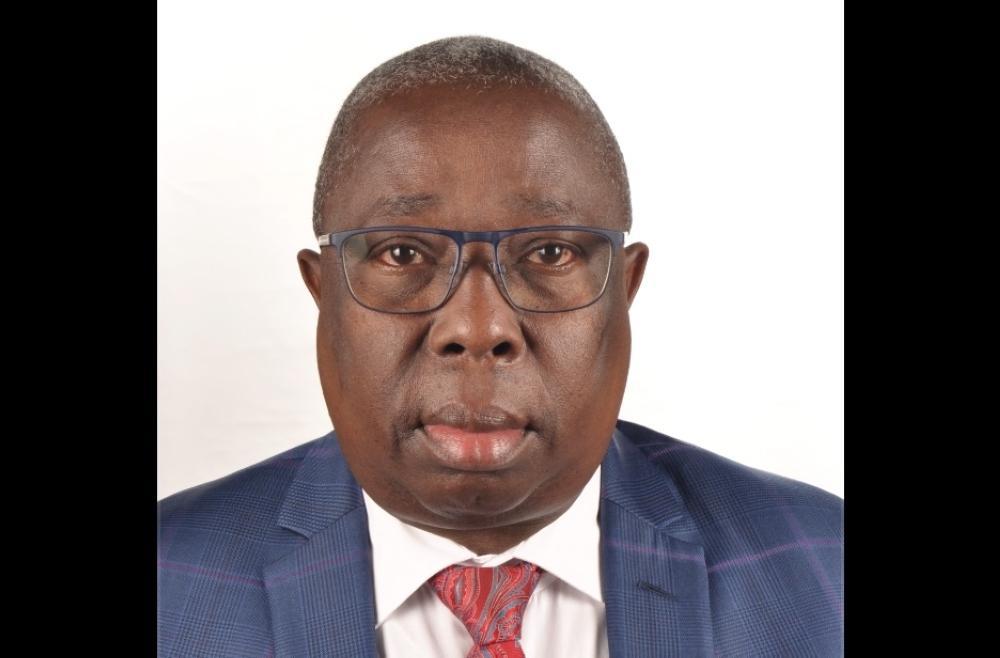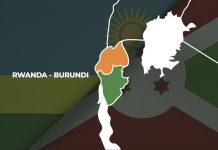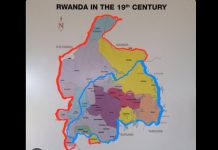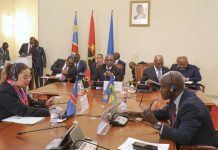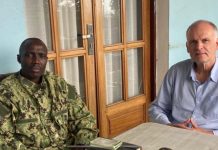Alfredo Dombe
Africa-Press – Rwanda. When a nation turns 50, it does more than celebrate, it redefines itself. For Angola, the Golden Jubilee of independence is not only a commemoration of past triumphs, but a declaration of future purpose: to build a diversified, innovative, and inclusive economy that strengthens African unity and positions the continent as a global actor of progress.
Half a century after the flag of independence was first raised on November 11, 1975, Angola stands tall, not merely as a survivor of war and hardship, but as a driver of renewal. It is a story written in resilience, reconstructed through vision, and carried forward by a new generation determined to make the next 50 years even more transformative than the last.
From survival to transformation
At the dawn of independence, Angola inherited a country in ruins. Infrastructure was shattered, institutions were fragile, and opportunities were scarce. Life expectancy stood at 41 years, infant mortality was among the highest in the world, and literacy barely reached 15 percent.
Today, Angola’s transformation is profound and measurable. Life expectancy has risen to 65 years; literacy now exceeds 72 percent; infant mortality has dropped by two-thirds. From 320 health facilities in 1975 to over 3,300 today, including 44,000 hospital beds and 35 specialized dialysis centres, the nation’s commitment to social development is evident.
Education, once a privilege, has become a right: from a single university at independence to 106 higher education institutions today, serving a growing population of scholars and professionals. Over five million schoolchildren benefit daily from the National Feeding Programme, ensuring that learning begins with nourishment.
These achievements are not just statistical milestones; they are symbols of faith, faith in human capital as the foundation of national progress.
Economic renewal and national ambition
The same resilience has powered Angola’s economic revival. In 1975, electricity generation stood at just 450 megawatts. Today, production exceeds 6,300MW, a fourteenfold increase fuelling homes, industries, and innovation hubs. Massive infrastructure projects such as the Laúca and Cambambe dams, the Soyo Combined Cycle Plant, and the forthcoming Caculo Cabaça Hydropower Station demonstrate Angola’s ambition to lead Africa’s energy transition.
Urban transformation tells a similar story: over 350,000 homes have been built in 30 new centralities, while thousands more are under construction. The opening of the Dr. António Agostinho Neto International Airport in 2023, with a capacity of over 15 million passengers a year, positions Angola as a new aviation hub bridging Africa, Europe, and Latin America.
These investments are not isolated developments. They are part of Angola 2050, the country’s long-term strategic vision that reimagines national wealth not as a product of oil, but as the outcome of human creativity, sustainable infrastructure, and sound governance.
Angola 2050: Building the next chapter
The Angola 2050 strategy is a blueprint for transformation. It shifts the nation’s focus from resource dependence to diversification through technology, agribusiness, renewable energy, tourism, logistics, and education. The plan reflects a broader African awakening. One that prioritizes integration over isolation, partnerships over aid, and shared prosperity over competition.
With nearly 40 million inhabitants, projected to reach 68 million by 2050, Angola’s demographic strength is its greatest asset. The strategy’s three pillars: human capital, sustainable infrastructure, and good governance, aim to harness that potential to build a knowledge-driven economy capable of generating jobs and driving innovation.
In that vision, the partnership with Rwanda becomes not only natural but essential.
A shared vision between Luanda and Kigali
Angola and Rwanda share more than diplomatic ties; they share a philosophy. Both nations have emerged from adversity through discipline, leadership, and a belief in African solutions to African challenges. Both have articulated long-term national strategies, Angola 2050 and Rwanda Vision 2050, that emphasize innovation, efficiency, and inclusivity.
In recent years, bilateral cooperation has deepened through high-level visits, agreements in trade and investment, and collaboration in peace mediation across the Great Lakes region. Angola’s leadership role in regional stability and Rwanda’s excellence in governance have become complementary strengths, one securing peace, the other fostering prosperity. Together, they illustrate a new African pragmatism that transforms political stability into economic dynamism.
Tourism: A bridge between the Atlantic and the Great Lakes
Among the sectors identified in Angola 2050, tourism stands out as a powerful engine of inclusive growth. Angola’s natural beauty is vast. A 1,600-kilometre coastline, pristine beaches, tropical forests, and national parks such as Kissama, Iona, Bicuar, and Cameia. Its music, gastronomy, and cultural diversity complete a mosaic ready for the world to discover.
Rwanda, in turn, has built a world-renowned tourism model anchored in sustainability and conservation. Its mountain gorillas, eco-luxury resorts, and clean, safe urban environment have positioned Kigali among Africa’s top conference and tourism destinations.
The potential synergy is striking: imagine an Atlantic–Great Lakes Tourism Corridor linking Angola’s coastline to Rwanda’s mountains, “safari and seaside in one itinerary.” Such cooperation could redefine intra-African tourism and create new markets for both nations, designed, managed, and owned by Africans themselves.
Cross-investment would be the catalyst. Angola’s hospitality infrastructure and energy capacity could attract Rwandan investors, while Rwanda’s expertise in eco-tourism, digital platforms, and service quality could inspire Angolan reforms. Together, they could shape a distinctly African tourism identity. High-value, sustainable, and proudly local.
Cross-Investment: The engine of continental integration
Tourism is only the beginning. Both countries are investing in sectors that form the backbone of Africa’s transformation: agriculture, renewable energy, logistics, digital technology, and education.
In agriculture, Angola’s vast arable lands can benefit from Rwanda’s precision agritech systems. In renewable energy, Angola’s hydropower abundance can combine with Rwanda’s solar expertise to develop sustainable, off-grid solutions. In digital innovation, Kigali’s tech ecosystem and Luanda’s emerging startups can jointly develop fintech, e-commerce, and digital governance platforms that enhance regional competitiveness.
The new configuration envisioned for the Lobito Corridor will further expand these opportunities. By linking Angola, Zambia, and the Democratic Republic of Congo to the Atlantic Ocean, it creates a vital artery for African trade, investment, and tourism. Rwandan logistics and fintech companies can play a pivotal role in technological management and cross-border transactions, strengthening the corridor’s position as a modern gateway for regional integration.
Conversely, Angolan firms are encouraged to tap into Rwanda’s innovation-driven economy, where governance efficiency and business facilitation are world-class. Through the Private Investment and Export Promotion Agency (AIPEX), Angola offers transparent investment regulations and protection guarantees, while Rwanda provides an ideal testing ground for regional integration models under the African Continental Free Trade Area (AfCFTA).
When these complementarities align, the result is not merely bilateral cooperation, it is continental transformation.
From independence to interdependence
Fifty years after independence, Angola’s success story is more than national. It is a statement about Africa’s capacity to rise, rebuild, and reimagine itself.
Membership in the SADC Free Trade Area and active participation in the AfCFTA have positioned Angola as both a Southern and Central African hub. Its ports, corridors, and industrial parks are gateways for intra-African trade, the very essence of the African Union’s Agenda 2063: “The Africa We Want.”
Angola’s journey, from a nation once defined by conflict to a regional leader in peace, stability, and cooperation resonates deeply across the continent. Rwanda’s rise, from post-genocide reconstruction to a model of innovation and governance, mirrors that same determination.
Together, Luanda and Kigali stand as evidence that Africa’s future lies not in external dependency but in internal partnership, not in exporting raw materials, but in exchanging ideas, skills, and opportunities.
The meaning of the Golden Jubilee
The Golden Jubilee is not a destination; it is a departure point. Angola enters its second half-century with gratitude for the sacrifices of its people and with clarity of purpose for the road ahead.
The message to Africa and the world is simple: peace and visionary leadership yield results. The evidence is undeniable, literacy up from 15% to 72%, life expectancy from 41 to 65 years, and thousands of schools, hospitals, and roads connecting a once-divided land. These are the dividends of independence and of perseverance.
But the next frontier will be defined by partnerships. Partnerships that multiply knowledge, attract investment, and build an Africa that trades with itself before trading with the world. The past 50 years were about independence and reconstruction; the next fifty will be about innovation, integration, and shared prosperity.
A continental call to action
As Angola celebrates its Golden Jubilee, it extends an open hand not just to Rwanda, but to Africa as a whole. It is an invitation to co-create a future where the continent’s youth, resources, and creativity drive sustainable growth.
From the Atlantic coast of Luanda to the rolling hills of Kigali, a new African narrative is being written, one of ambition, unity, and faith in self-reliance.
Because when Angola and Rwanda dream together, Africa moves forward.
Source: The New Times
For More News And Analysis About Rwanda Follow Africa-Press

